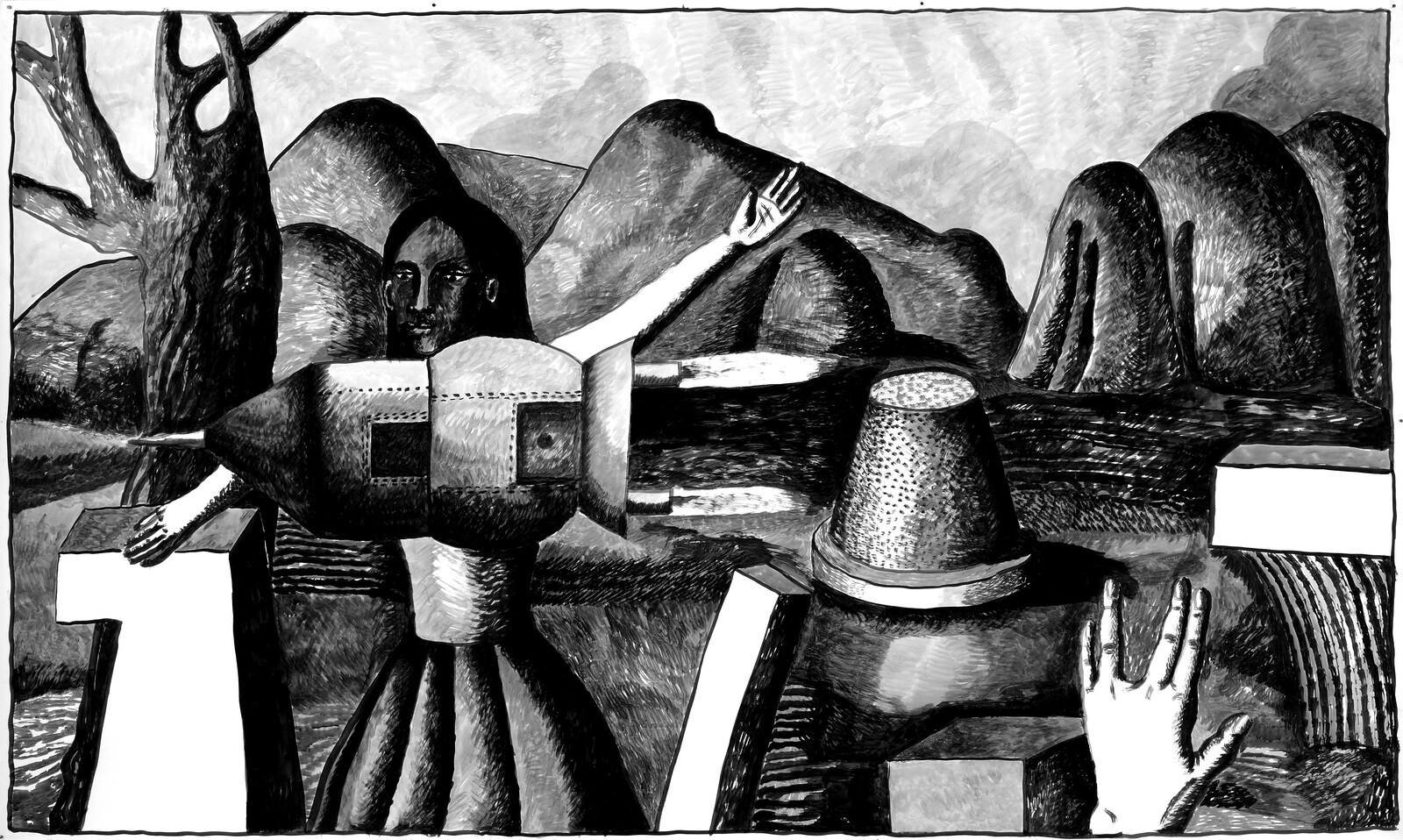Books, symposium, exhibition
November 28–30, 2018
Pod turnom 3
SI- 1000 Ljubljana
Slovenia
From Biennial to Biennial is a 3-day event which is a postponed reflection on the 32nd Biennial of Graphic Arts: Birth as Criterion. Composed of a presentation of the books Nocturnal Singer by Alejandra Pizarnik and Jure Detela’s Selected Poems (all artists that were invited to participate in the 32nd Biennial of Graphic Arts in Ljubljana received the poem Birth as Criterion by Jure Detela with the desire to trigger something along with their invitation), an international symposium The Irrational in a Biennial that will discuss and challenge the traditional biennial structure, and a solo exhibition by Nathalie Du Pasquier: Fair Game, the event attempts to bring together diverse mediums of perception.
The starting point of the symposium is an experiment—the artist selection process of the 32nd Biennial of Graphic Arts: Birth as Criterion. The withdrawal from the academism of the curatorial practices allowed for an embrace of the irrational, which was particularly visible in the list of participants established by coincidence. The symposium is imagined as an opportunity for reaching a broader understanding of contemporary art biennials as vehicles for experiment and meaningful change within the art world. When we think of “business as usual”—each biennial being entangled within the web of perpetuating precarious conditions, its funding and supporting institutions, and satisfying the end result of a well-displayed exhibition—is such an aspiration doomed to fail?
How can biennials contribute to wider change if they do not step out of their own institutional framework? In other words, can biennials be critical from within? Would criticism be a way to avoid reproducing the power dynamics, which are so deeply compromised by capitalism?
The symposium therefore intends to tackle the problematic nature of the biennial structure and at the same time wishes to address particular cases of biennial editions, which have succeeded in going beyond established selection processes.
The symposium will derive from 32nd edition of the Biennial of Graphic Arts, but at the same time it opens up the discussion towards the 33rd edition curated by Slavs and Tatars. They look to satire as a particularly visual language, revisiting the “graphic” heritage of the biennial through an expansive understanding of the term—as expressive, uninhibited, even lurid. By asking “Is each joke, as George Orwell maintained, a tiny revolution? Or does laughter and satire deflate the pressures and tension which could otherwise lead to political upheaval?” Slavs and Tatars look to humor as both strategy and a content. The visual glut of our times has spawned new aesthetic languages whose messages and discourse we often find distasteful. Though each enjoys a distinct history, both the graphic arts and satire claim to speak for and to the people.
With contributions by Zasha Colah (Clark House Initiative, Bombay), Ana Dević (WHW – What, How and for Whom collective, Zagreb), Anselm Franke (Haus der Kulturen der Welt, Berlin), Gerardo Mosquera (independent curator and critic, Madrid), Christian Oxenius (freelance curator, author and researcher, Athens), Viktorija Rybakova (artist and architect), Slavs and Tatars (artists, appointed curators of the 33rd Biennial of Graphic Arts), Nevenka Šivavec (director, International Centre of Graphic Arts, Ljubljana), Vladimir Vidmar (curator, ŠKUC Gallery, Ljubljana) and ŠUM (art theory collective, Ljubljana).


